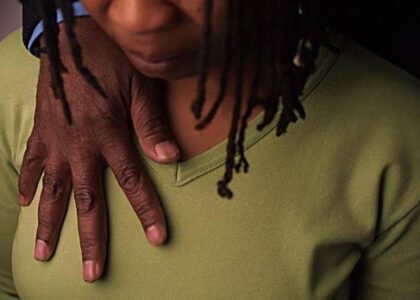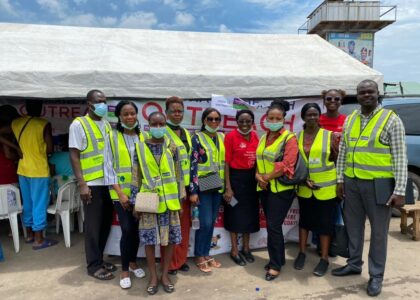[fusion_builder_container hundred_percent=”no” equal_height_columns=”no” menu_anchor=”” hide_on_mobile=”small-visibility,medium-visibility,large-visibility” class=”” id=”” background_color=”” background_image=”” background_position=”center center” background_repeat=”no-repeat” fade=”no” background_parallax=”none” enable_mobile=”no” parallax_speed=”0.3″ video_mp4=”” video_webm=”” video_ogv=”” video_url=”” video_aspect_ratio=”16:9″ video_loop=”yes” video_mute=”yes” video_preview_image=”” border_size=”” border_color=”” border_style=”solid” margin_top=”” margin_bottom=”” padding_top=”” padding_right=”” padding_bottom=”” padding_left=””][fusion_builder_row][fusion_builder_column type=”1_1″ layout=”1_1″ spacing=”” center_content=”no” hover_type=”none” link=”” min_height=”” hide_on_mobile=”small-visibility,medium-visibility,large-visibility” class=”” id=”” background_color=”” background_image=”” background_position=”left top” background_repeat=”no-repeat” border_size=”0″ border_color=”” border_style=”solid” border_position=”all” padding_top=”” padding_right=”” padding_bottom=”” padding_left=”” margin_top=”” margin_bottom=”” animation_type=”” animation_direction=”left” animation_speed=”0.3″ animation_offset=”” last=”no”][fusion_imageframe image_id=”14119″ style_type=”none” stylecolor=”” hover_type=”none” bordersize=”” bordercolor=”” borderradius=”” align=”center” lightbox=”no” gallery_id=”” lightbox_image=”” alt=”” link=”” linktarget=”_self” hide_on_mobile=”small-visibility,medium-visibility,large-visibility” class=”” id=”” animation_type=”” animation_direction=”left” animation_speed=”0.3″ animation_offset=””]https://www.ehainigeria.org/wp-content/uploads/2018/04/lassafever.png[/fusion_imageframe][fusion_text]
Multimammate rat ( Mastomys natalensis);Natural reservoir for Lassa Virus, characterized by foul odour, long hairless tail, soft body fur, pointed rostrum and ventral surface lined by multiple mammary glands.
[/fusion_text][fusion_text]
Since the onset of the 2018 Lassa fever outbreak in Nigeria, there have been 105 deaths in confirmed cases and nine (9) deaths in probable cases. Case Fatality Ratio in confirmed cases is 25.4%. Situation report from Nigeria Centre for Disease Control published on April 15, 2018 states that from 1st January through 15th April 2018, a total of 1849 suspected cases have been reported from 21states.These numbers are staggering to Nigeria.
Lassa fever is an acute viral hemorrhagic fever illness that is known to be endemic in various West African countries including Nigeria. Lassa fever is caused by the Lassa virus and first reported in Lassa town, Borno State, Nigeria in 1969.
The Lassa virus is a single stranded RNA virus belonging to the Arenaviridae family of viruses. The virus is often named hemorrhagic fever virus because of the tendency to cause bleeding from the body. Multi-mammate rats are the natural reservoir and a host of the virus .Lassa virus is responsible for deadly epidemics of hemorrhagic fevers in the West Africa sub-region. Lassa fever is transmitted to humans via contact with food or household items contaminated with rodent urine or faeces. Ribavirin remains the only effective life-saving treatment only when given six days of onset of symptoms.
Outbreaks in Nigeria are common in rural communities and in hospital settings, fuelled by socio-cultural practices, poor environmental hygiene, poor personal hygiene and ultimately by poor practice of infection prevention and control. Not less than 28 states in Nigeria and the Federal Capital Territory have witnessed outbreaks of Lassa fever in last five decades.
Noteworthy public health responses to Lassa fever in Nigeria include:
- Enhanced surveillance in all affected states and Lassa fever cases are reported to the federal level.
- Contact tracing is on-going in affected states with an active outbreak through the state surveillance team.
- The line listing of cases reported across all the states is on-going and data are uploaded in the VHF database.
- Lassa fever treatment centres have been established in the affected states to support case management. These centres are supplied with case management as well as infection prevention and control supplies.
- Lassa fever case management centers are operational in three states (Ebonyi, Edo and Ondo states). The health care workers working in these centers are trained in standard infection prevention and control (IPC) as well as in the use of personal protective equipment (PPE) and case management.
- In addition, the field teams are actively investigating the suspected cases and deaths reported in community settings and contacts are being followed up.
- There are three laboratories at Abuja, Irrua and Lagos which are operational and used for testing samples for Lassa fever by polymerase chain reaction (PCR). Phylogenetic analysis of 49 viruses detected during the 2018 outbreak, provided through collaborations between Irrua Specialist Teaching Hospital, Bernhard Nocht Institute of Tropical Medicine, African Center of Excellence for Genomics of Infectious Disease (ACEGID) and Redeemer’s University
These interventions have resulted in a decline in the disease outbreak in Nigeria. This is evident in the NCDC situation report in the reporting week 15 (April 09-15, 2018) in which only five new confirmedi cases were recorded from four States – Edo (2), Ebonyi (1), Kogi (1), and Adamawa (1) with three new deaths in confirmed cases from Ebonyi (1), Adamawa (1) and Kogi(1). This is the lowest weekly case count since the first week of January 2018.
[/fusion_text][fusion_imageframe image_id=”14120″ style_type=”none” stylecolor=”” hover_type=”none” bordersize=”” bordercolor=”” borderradius=”” align=”center” lightbox=”no” gallery_id=”” lightbox_image=”” alt=”” link=”” linktarget=”_self” hide_on_mobile=”small-visibility,medium-visibility,large-visibility” class=”” id=”” animation_type=”” animation_direction=”left” animation_speed=”0.3″ animation_offset=””]https://www.ehainigeria.org/wp-content/uploads/2018/04/graph-300×146.png[/fusion_imageframe][fusion_text]
Cases of Lassa fever by Epidemiological week in Nigeria Source: Nigeria Centre for Disease Control
[/fusion_text][fusion_text columns=”” column_min_width=”” column_spacing=”” rule_style=”default” rule_size=”” rule_color=”” hide_on_mobile=”small-visibility,medium-visibility,large-visibility” class=”” id=””]
However, the World Health Organization has cautioned Nigeria after confirming a steady decline in Lassa fever cases and deaths from 70 by February 18, 2018 to five by April 15, 2018. According to WHO, this declining trend needs to be interpreted with caution as historical data shows that the high transmission period has not passed.
This statement by WHO emphasizes the need for proactive and consistent vigilance against Lassa fever. This means that all surveillance activities, prevention and control measures should be strengthened despite the steady decline.
Proactive and consistent vigilance against Lassa fever can be done by improving efforts and resources geared towards Lassa fever sensitization, close follow up, active case searching, contact tracing, laboratory support and disease awareness (in the community and for health care workers). Other proactive measures include:
- Institution and enforcement of policies, task force, committees for surveillance, prevention and control of Lassa fever at National, state and grassroots levels.
- Health education/sensitization of the public and health workers about the disease, transmission, manifestations and prevention.
- Proactive vigilance measures against Lassa fever at the Individual and community level include:
- Keeping good and healthy personal hygiene
- Cleaning your home and environment.
- Emptying waste far away from homes.
- Avoid spreading food where rats can have access to it
- Storing foodstuff and water in rat proof containers
- Washing and cooking all foods properly
- Avoid bush burning, Setting traps in and around homes to reduce rat population
- Blocking all rat hideouts, Avoid contact with rats–e.g. rat hunting for consumption
- Keeping cats
- Proactive vigilance measures to be adopted in hospitals include:
- Good hygiene within and around the hospital
- Adherence to infection prevention and control measures
- Wearing protective clothing when caring for patients or working with secretions of patients being managed for any illness.
In line with WHO, Lassa fever remains a cause of mortality in Nigeria despite evident decline. Hence, efforts should be consistently geared to strengthen surveillance and response to Lassa fever and o strictly implement preventive and vigilance strategies against the disease.
The links below are the references from which this article was drawn. They contain more updates and more information on Lassa fever in Nigeria.
https://www.researchgate.net/publication/276270028
For more insightful contents from Oluwatobiloba Akerele, watch this space.
You can also follow her on social media:
Instagram: @oluwatobiloba_akerele
LinkedIn: @Oluwatobiloba Hannah Akerele
Join the conversation: drop your comments here and follow us on social media
Watch this space!
Featured Image: Google Images
[/fusion_text][/fusion_builder_column][/fusion_builder_row][/fusion_builder_container]







